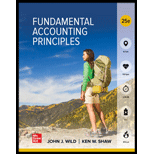
Concept explainers
Concept Introduction:
Sales variance is the difference between budgeted sales and actual sales. Sales variance can be because of two reasons
- Actual selling price of the product varies from the budgeted selling price and/or
- Actual quantity of sales varies from the budgeted quantity.
Therefore, sales variance is the sum of (i) Sales Price Variance and (ii) Sales Volume Variance.
Sales Price Variance:
The difference between the actual selling price and the budgeted selling price is the Sales Price Variance.
Sales Volume Variance:
The difference between actual quantity of sales and budgeted quantity is the Sales Volume Variance.
The following formulas are used to calculate Sales variance:
SalesVariance=Sales Price Variance+ Sales Volume Variance
Also Sales Variance = Budgeted Sales − Actual SalesSales Price Variance = Actual Sales - Actual quantity of Sales at budgeted price
Sales Volume Variance = Actual quantity at budgeted price -Budgeted quantity at budgeted price
Sales variance gives a view of deviations from the set standards which can be wither favorable or unfavorable
Sales Price and Volume Variance
Want to see the full answer?
Check out a sample textbook solution
Chapter 23 Solutions
FUND.ACCT.PRIN.

 AccountingAccountingISBN:9781337272094Author:WARREN, Carl S., Reeve, James M., Duchac, Jonathan E.Publisher:Cengage Learning,
AccountingAccountingISBN:9781337272094Author:WARREN, Carl S., Reeve, James M., Duchac, Jonathan E.Publisher:Cengage Learning, Accounting Information SystemsAccountingISBN:9781337619202Author:Hall, James A.Publisher:Cengage Learning,
Accounting Information SystemsAccountingISBN:9781337619202Author:Hall, James A.Publisher:Cengage Learning, Horngren's Cost Accounting: A Managerial Emphasis...AccountingISBN:9780134475585Author:Srikant M. Datar, Madhav V. RajanPublisher:PEARSON
Horngren's Cost Accounting: A Managerial Emphasis...AccountingISBN:9780134475585Author:Srikant M. Datar, Madhav V. RajanPublisher:PEARSON Intermediate AccountingAccountingISBN:9781259722660Author:J. David Spiceland, Mark W. Nelson, Wayne M ThomasPublisher:McGraw-Hill Education
Intermediate AccountingAccountingISBN:9781259722660Author:J. David Spiceland, Mark W. Nelson, Wayne M ThomasPublisher:McGraw-Hill Education Financial and Managerial AccountingAccountingISBN:9781259726705Author:John J Wild, Ken W. Shaw, Barbara Chiappetta Fundamental Accounting PrinciplesPublisher:McGraw-Hill Education
Financial and Managerial AccountingAccountingISBN:9781259726705Author:John J Wild, Ken W. Shaw, Barbara Chiappetta Fundamental Accounting PrinciplesPublisher:McGraw-Hill Education





